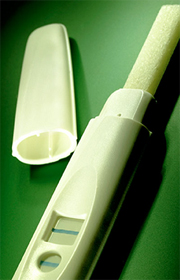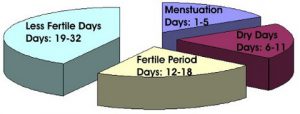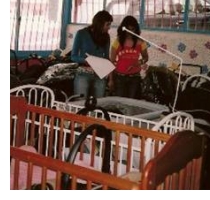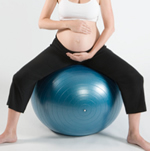Conception Basics – The Key To Falling Pregnant
 To guarantee conception is almost,
if not entirely, impossible. There is so much that relies on the timing being absolutely correct, as the female egg will only be available for fertilization for a short period of time during the female cycle. There are also many external factors which may prevent you from having a successful conception. In order to conceive, you will need to know the basics of the female cycle, how to calculate the ovulation date and when to have sex in order to best help ensure conception.
To guarantee conception is almost,
if not entirely, impossible. There is so much that relies on the timing being absolutely correct, as the female egg will only be available for fertilization for a short period of time during the female cycle. There are also many external factors which may prevent you from having a successful conception. In order to conceive, you will need to know the basics of the female cycle, how to calculate the ovulation date and when to have sex in order to best help ensure conception.
Ovulation And The Female Cycle
The key to falling pregnant is to know your own monthly cycle down to a tee. Not all monthly cycles are the same and can vary anywhere from between 22-42 days, with the average being 28 days. Some woman’s cycles even vary from month to month. It is usually recommended you track your cycle for 3 to 4 months to be 100% sure that you will be accurate. Ovulation usually takes place at around 14 days from the first day of your monthly cycle (bearing in mind the average cycle is 28 days). The first day of your cycle is taken as the first day on which you begin to have your discharge. However, you will begin to become more fertile from about 4 days before you actually ovulate and will last for up to 48 hours after you ovulate. You will be at your most fertile on the day prior to and of course on the day you do actually ovulate. Ovulation itself is easiest to calculate by measuring your body temperature, this is because you will have a slight increase in body temperature when you ovulate. If you are unable to calculate your ovulation date, then just work around the average of 14 days from the first day of your monthly cycle. Let’s take a look at the pie chart to make better sense of ovulation and when you are at your most fertile. The key to a succesfull conception is understanding just how the female cycle works, when you are at your most fertile and when you would be wasting energy trying to fall pregnant.
NOTE: This example takes into account that your cycle is 28 days, with a 14 day ovulation phase, or the Luteal phase.
The key to a succesfull conception is understanding just how the female cycle works, when you are at your most fertile and when you would be wasting energy trying to fall pregnant.
NOTE: This example takes into account that your cycle is 28 days, with a 14 day ovulation phase, or the Luteal phase.
- Days 1-5: Your first day of the cycle is when you first start to menstruate. So day one is the day you begin to have discharge. It is very important to record this date as we will need it to calculate your estimated ovulation date.
- Days 6-11: These days are called ‘dry days’, as you are not menstruating nor are you fertile. Your body at this stage is simply preparing to release the egg.
- Days 12-18: These are the days when you will be at your most fertile. Your body will release the egg during the course of these 6 days, so this is the best time to be having sex if you are trying to conceive.
- Days 19-28: If you are only having sex during this period, then I am afraid to say you have missed your chance and will have to wait for the cycle to begin again. It is highly unlikely that you will have any success in falling pregnant during this time.
 Watch our conception related videos from medical professionals who will guide you through the basics of conception all the way how to conceive a boy or girl
Watch our conception related videos from medical professionals who will guide you through the basics of conception all the way how to conceive a boy or girlBasics Of Conception


